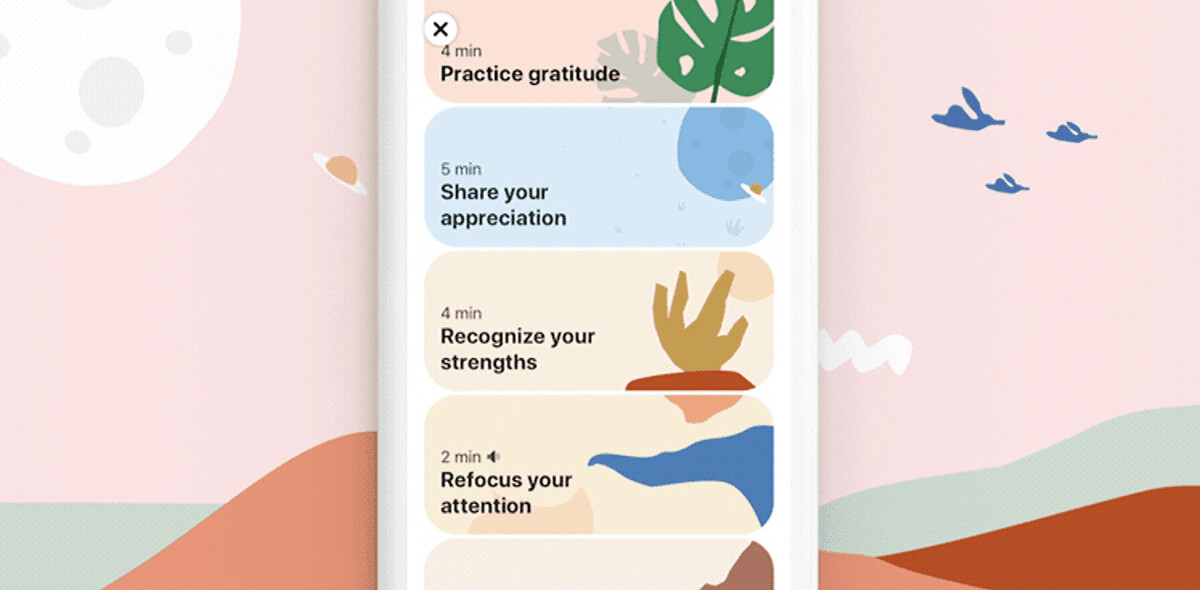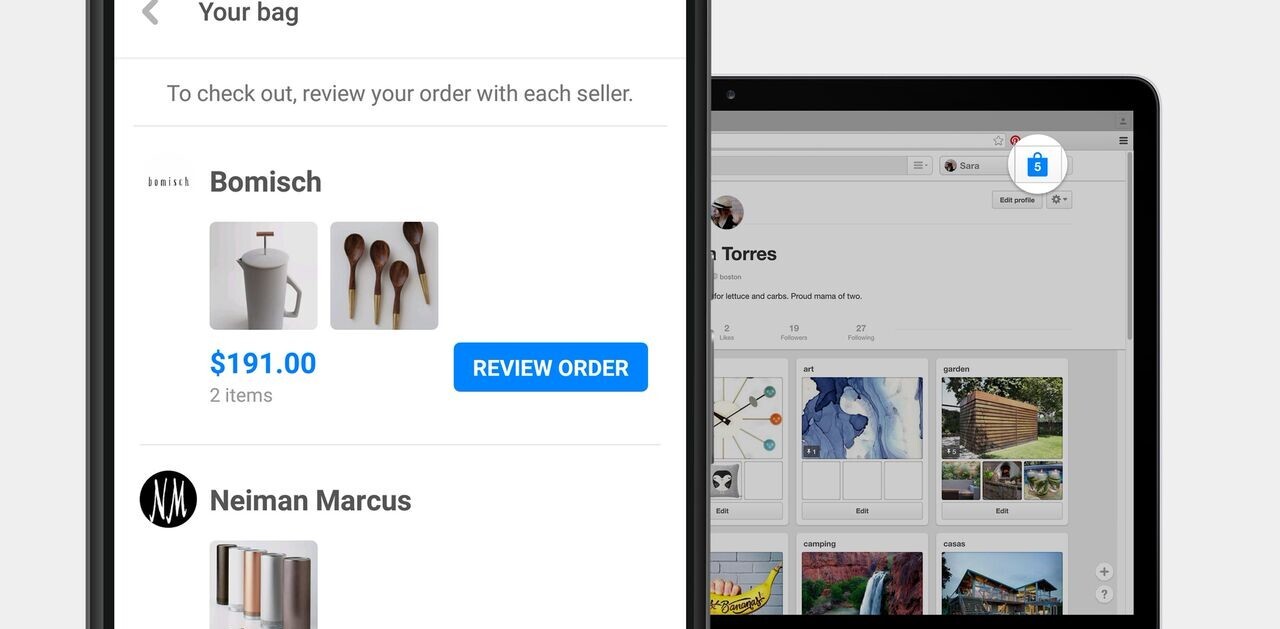
Pinterest is popping up all over; in fact, sources say it’s the fastest-growing social media site to date, especially for women.
The image-sharing network, co-founded by Iowa’s Ben Silbermann, launched in March 2010. By August 2011 it had already made it onto Time Magazine’s ’50 Best Websites for 2011’ list. By February 2012, the online pinboard boasted 11 million visitors and, according to a study by Shareaholic, pinterest.com currently drives more referral traffic than Google+, YouTube and LinkedIn combined.
But CEOs, VPs and brand managers who navigate Facebook and Twitter pages with ease are scratching their heads at the site that can look more like a hasty collage of images than targeted branding efforts. How does Pinterest work, exactly? And how can it help grow your brand?
The Basics
Pinterest users organize images they like in themed boxes, called pinboards. People can share images by repinning them, in addition to liking or commenting on them. Users connect by following individual boards or other users’ full profiles. Pinterest allows you to keep adding new pinboards and make them as specific or general as you like. The network currently has a higher female demographic and is heavily weighted toward lifestyle, fashion and home interests — although, as every startup founder knows, this is susceptible to change.
So, here are a few ways to understand how you can complement your vision as a Pinterest user, whether you’re a big brand or an individual just looking to pin stuff you love.
1. Who Are You, Really?
Getting started on Pinterest is a great opportunity to think outside your traditional product lines or marketing approach. What themes sum up your brand, and how do these connect with your customers? Random House Publishing successfully keeps its product marketing to a minimum and focuses on wider literary interests. It has boards for literary weddings (and tattoos!), an ‘Amazing Places to Read’ board, and examples of gifts that appeal to your inner bookworm.

2. Craft a Presence
Pinterest is driven by individual tastes, and brands’ activity should reflect that. People come to Pinterest to share and celebrate what inspires them, meaning that the ‘hard sell’ is out of place in this sort of environment. Instead, brands should identify what makes them unique and the qualities that connect them to their customers. Craft store chain Jo-Ann fits Pinterest’s core demographic perfectly, but it also knows how to appeal to customers’ creativity. This brand goes beyond its own product lines with boards such as ‘Foodcrafting’, ‘Becoming a Disney Princess’, and ‘It’s Time’, a whimsical collection of clock images.
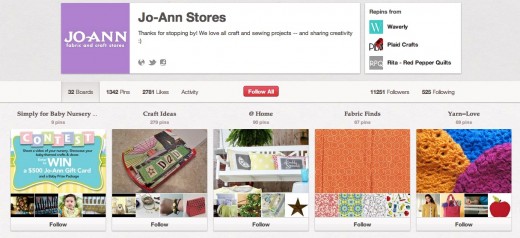
3. Add The Pinterest Icon
If you’re e-commerce site, make it easy for fans to pin your content by adding a PinIt button directly onto your website. Users will be less likely to use Google Images to pin your products (or not pin them at all), allowing new customers to visit your site. Online marketplace Etsy built the PinIt button into its site. As a storefront for thousands of small businesses and designers, it is vital to their model that potential customers can find their way back to the source. (Psst: even if you’re not an e-commerce site, consider adding the PinIt icon; Pinterest has already proven it can drive large amounts of traffic to various brands.
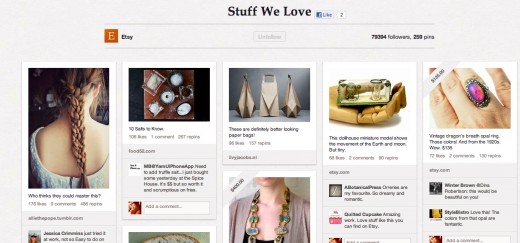
4. Give Back
Pinterest offers product promotion in its Gift section. When users upload a Pin, they can simply tag it with a price and description to allow it to appear on the page. If users follow the link, it will take them back to your website sales page. It is still recommended that you share plenty of other people’s content too, rather than only Pinning your own products.
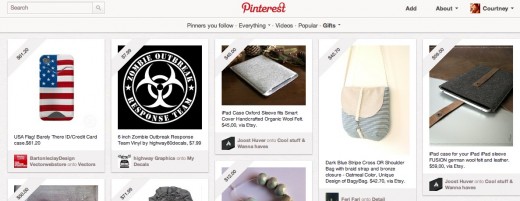
5. Update Your Content
Pinterest has a very current format: popular images often reflect seasonal trends or events, such as holidays, Valentine’s Day or movie releases. The Weather Channel is great at this: as well as the usual season-related Pinboards you might expect, it also has ‘Weather Style’, weather-related recipes, ‘Weather Pets’, and weather education themed boards.
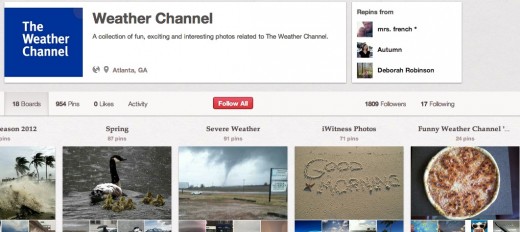
6. Re-pin. Repeat.
Sharing content is central to Pinterest’s business model. Much like any other social site, the more active you are on Pinterest, the more likely users will follow your board(s). Re-pinning often also helps to keep your content and your audience fresh. Rather than focusing on their own products (which don’t translate well to Pinterest’s model), airline company Southwest prefers to highlight its fun rep — its boards boast plane-related crafts and images of vintage travel, most of which are re-pinned often. Its popularity on Pinterest comes from shedding a typical “brand” profile and really getting behind the network’s ethos.
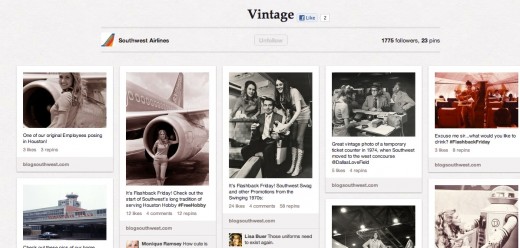
7. Celebrate Your Fans
Pinterest has the unique ability to make your branding experience as much about your audience as it is about you. Lindt, for example, has a board dubbed ‘Your Creations’, which showcases its various chocolate creations. BedandBreakfast.com‘s Pinterest page offers travel tips its followers have sent in from around the world. Colleges are hopping on the Pinterest bandwagon by offering custom boards that allow students and alumni to pin images that remind them of their experience as a collegian.
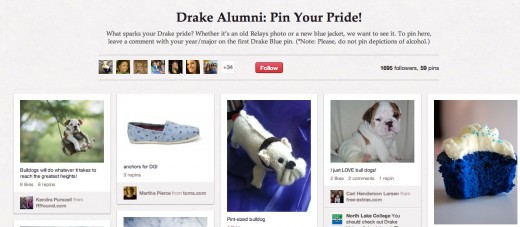
So what are you waiting for? It’s time to put your interest in Pinterest.
Get the TNW newsletter
Get the most important tech news in your inbox each week.

